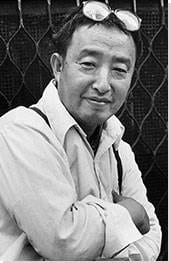Who is the practitioner (what is their name?) and when were they practising?
Nam June Paik (July 20, 1932 – January 29, 2006) was a Korean American artist who was known as the pioneer in video art. He was trained as a classical pianist at an early age to pursue his interest in music, performances and composition. After moving to Germany, he met Joseph Beuys and Wolf Vostell (conceptual artists) who inspired him to work in electronic art and become dedicated to being part of the Neo-Dada movement. The movement was inspired by composer John Cage who use everyday sounds and noises in his experimental music. Under such influences, June Paik engaged in artistic practices and made his debut in 1963 at an exhibition named ‘Exposition of Music-Electronic Television’.
What is the title of the photo or video you have chosen to analyse (can you provide a link?)
Title: Video Flag Z (1986)

With the photo or video, you are examining when was it produced (date)?
It is created in 1986.
How was the photo or video authored?
The video was authored by Paik in 1986 using 84 Quasar Televisions in grid form with 6-foot high to create an America flag layout. He created two channels, one to feed all the screens on the left top section in stars while another channel is to feed the rest of the screens in stripes. The stars and the stripes changed constantly like dissolving in and out, spinning and flashing. Sometimes, it indistinctly showed news still, rotating statue of Liberty and faces with a morph of US presidents from Harry S. Truman to Bill Clinton and it is endlessly running of ones and zeros. This work was created based on the American flag for three sculptures: Video Flag X, Video Flag Y and Video Flag Z with a symbolic meaning to praise America and the power of learning from youth-oriented culture. Video Flag Z embodied the latest advance of technology during the 80s, including laser disks, automatic switcher and thirteen-inch monitors, this incorporates his belief in technology that gives people a chance to make a shared art and the idea of ‘Global Grove’ as he had predicted in 1973 there will be global satellite TV which allows people to switch to any TV station in the world (Tate 2019).
How was the photo or video published?
The video was published as the analogue electronic signals to create the flash and transition of image on the monitors. Indeed, analogue video and television are highly reliant on physical objects in the world (Lister et al, 2009, p. 19), like cables, fibres, television monitors, electricity supply etc. This means Paik had to ensure all the points were interfering with the signal so to project the effects in the video.
Unfortunately, there are limited sources to show whether the videos had been shown in other analogue television. However, it is certain that this video was shown on 84 Quasar monitors in the art galleries or exhibitions in the past. Yet, the screen of the Video Flag Z went dark since the 2000s and Los Angeles County Museum of Art (LACMA) conservator John Hirx stated that they could not find replacement anymore subsequent to the closure of Quasar manufacturing. The artwork pieces are currently stored in the museum’s warehouse. This situation applies to other avant-garde works as they are videos, laser-discs and technology-based, they are plagued with failing disk drives, burned-out bulbs, scorched wires etc (Pham 2004) when times went by. The video art involves various sectors to conserve, unlike the analogue photography that only required several chemicals and designated environment to maintain it.
How was the photo or video distributed?
As known that Video Flag Z was shown in Los Angeles Country Museum of Art from 1986 till the 2000s. Regrettably, people could not see its authentic anymore due to the dissipation of time, however, there are still access via Youtube because of visitors and fans of Paik recorded the art piece while they are visiting the gallery and upload it online. Besides, the image of it could be found in the museum sites.
References
Lister, M et al 2009, New Media: A Critical Introduction, Routledge, New York, p16-21
Pham, A. 2004, Art That Goes on the Blink, Los Angeles Times, viewed on 7 April 2020
Tate, 2019, 5 Times Artist Nam June Paik Predicted the Future | Tate, Youtube, 20 December, Tate, viewed on 7 April 2020




